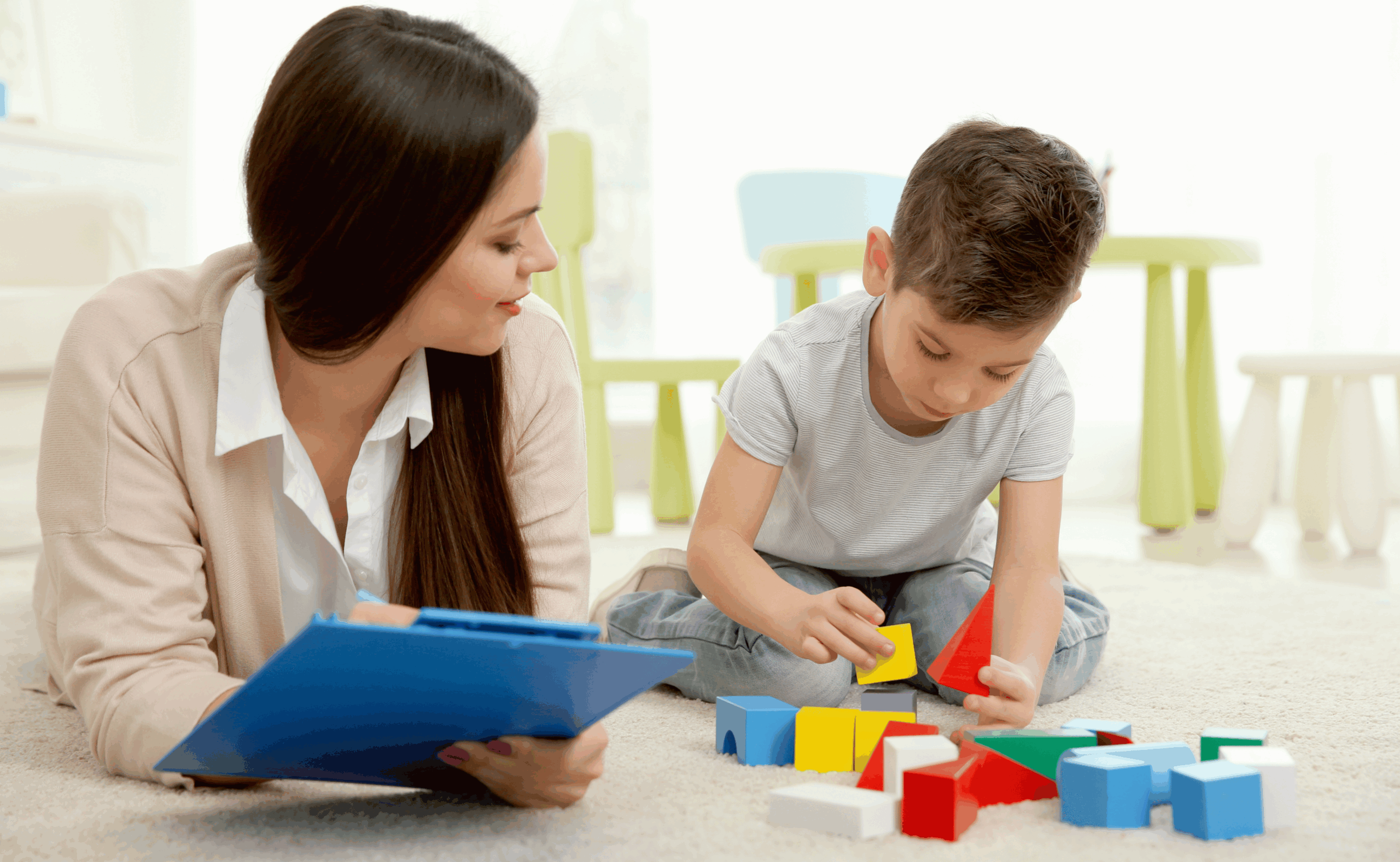Let’s understand aggression more by looking into its meaning and types: Hostile Aggression and Instrumental Aggression.
According to the American Academy of Pediatrics, approximately 3% to 7% of children and adolescents manifest signs of aggression.
The word aggression is familiar to us. We say people are aggressive once they yell at or hit other people when their emotions trigger them. Some may show hostile aggression, others instrumental aggression.
But do you call the acts that are causing harm to players during a wild game or soldiers defending themselves by killing enemies aggression?
What is Aggression?
According to Social Psychologists, aggression is a behavior intended to harm another individual who does not wish to be harmed ( Baron & Richardson, 1994).
Human aggression is very hard to define because it involves perceiving that what looks like aggression to one person may not look that way to another. Frequently harmful acts are not seen as dangerous depending on their intent.
Characteristics of an Aggressive Child
What are the characteristics of an aggressive child? Knowing these things could help you help your child regulate or eliminate aggression tendencies.
It gets frightening when your child becomes a victim of another aggressive child. But more alarming when it’s your child who is causing harm to another.
All children occasionally push or shove a playmate who’s teasing them or kicking a chair when they’re disappointed with parents. Consequently, according to Health Day, a child who has a problem controlling how to react to situations typically does one or more of these things:
- Frequently loses his temper, getting intensely angry
- Is extremely irritable or impulsive and has trouble staying focused
- Becomes frustrated easily
- Physically attacks and fights other children or adults
- Is frequently disruptive, argumentative, or sullen
- Performs poorly in school or can’t participate in classroom or other organized activities
- Has trouble taking part in social situations and making friends
- Argues or constantly fights with family members and won’t accept parental authority
- Inevitably challenges authority and refuses to obey rules
- Frequently denies responsibility for his misbehavior and blames others
Possible Causes of Aggression in Children
Aggression is mainly a reaction to certain external factors, such as physical fear and frustration. Child development is a critical part. However, there are more complicated reasons that may cause different forms of aggression, some of which are:
- Family Problems
- Learning Challenges
- Neurological Disorders
- Behavioral Disorders
- Emotional Trauma
- Environmental Influences
Hostile Versus Instrumental Aggression Dichotomy
Psychologists have categorized aggression as hostile or instrumental. This dichotomy had been helpful in the early development of theories on aggression. Furthermore, according to these Psychologists, the dichotomy doesn’t consider aggressive acts with multiple motives. Thus, they suggest it is perhaps time to pull the plug and let the hostile and instrumental aggression dichotomy meet its death.
Understanding Hostile and Instrumental Aggression
Understanding hostile and instrumental aggression does not only help in assessing the problem but finding solutions as well. At some point in child development, families may experience children throwing tantrums when they’re young or rebellion in their adolescent years. These behaviors are normal when they’re not consistently happening. It’s a different story when they form a pattern over time.
Every parent wants a happy, well-behaved, intelligent, and curious child. A child that everyone in the community adores. But what if your child is moody, often exceedingly sad or depressed? What if your child hits, pushes, bites, or spits on other children? What if your child shows signs of committing hostile and instrumental aggression?
Hostile Aggression
Hostile Aggression refers to violent attitudes or actions associated with anger and a desire to dominate a situation or others. It displays itself in verbal, non-verbal, and physical ways and holds the intention of causing harm.
Moreover, Hostile Aggression refers to acts motivated by feelings of anger that aim to cause pain. These acts are usually products of an emotional outburst, a sudden reaction rather than a planned activity. This kind of aggression can be a reaction to a threat or an insult made by another.
A person who feels threatened by somebody or is hurt responds aggressively to retaliate against the person who caused it. The primary purpose of the aggressor is to cause pain.
Hostile aggression is also called emotional or impulsive aggression.
Example of Hostile Aggression
A fight with a classmate who said something insulting resulting in cuts and bruises.
In this example, the insult resulted in a fight, cuts, and bruises. The emotion triggered by the insult is the motive of the aggression.
Instrumental Aggression
On the other hand, instrumental aggression is when an individual intentionally acts aggressively to achieve a particular purpose. This type is different from hostile aggression because there is no emotional drive in the aggression but a purpose. It also refers to cognitive aggression.
Instrumental Aggression does not necessarily involve intent to cause harm and is only motivated to achieve a particular goal. It happens when kids fight over objects, rights, or territories, and somebody gets hurt. Both kids think they are the first to a particular toy in the park or book at school. The goal of the harm done is to have control over the toy or book.
Photo by Victoria Borodinova from Pexels
Example of Instrumental Aggression
An example is a child who bullies classmates and intentionally gets their money. The child becomes aggressive to be able to get the money.
In this example, you will see that more than bullying, the bully intentionally commits the act to get the money of the weak victim.
Difference Between Hostile and Instrumental Aggression
Hostile and Instrumental aggressions as forms of aggression are different because of their goals. In Hostile Aggression, the goal is to harm someone triggered by an emotional reaction. On the other hand, instrumental aggression wants to achieve something and is not about emotional responses at all.
Photo by cottonbro from Pexels
Bullying and Aggression
Bullying is a modern form of aggression. It has gained more popularity than years ago as people have more ways of engaging with each other. The ability to socialize changed the behaviors of humans in the different social networks.
The digital era has made bullying show another face, and that’s cyberbullying. Cyberbullying is bullying by using the internet. Hence, it can damage another person more than ever on the internet in real-time.
More about Bullying
What is bullying? The American Psychological Association defines bullying as aggressive behavior in which someone intentionally and repeatedly causes another person injury or discomfort.
Bullying can be physical contact, verbal, or more subtle actions. The bullied individuals are victims that cannot defend themselves and have done nothing to cause the aggression. Though they may not experience physical aggression, these victims of bullying are equally suffering the act of the aggressor who is the bully.
Bullying has three parties: the bully, the victim, and witnesses or bystanders. The victims of bullying experience having issues in mental health and also anxiety and depression. Those who have become victims of bullying don’t perform well in school, and some also tend to commit suicide.
Who gets bullied?
Those who get upset easily may attract bullies because bullies enjoy getting a reaction from the victim. Bullies tend to pick on people who are often emotional and quickly react to situations.
They also like to cause harm to those who seem to be weak, as the overweight, culturally or racially different, not intelligent, or too bright, or those who are too nice at school.
Bullies also like to target gays, lesbians, bisexuals, and transgender teens.
At times, because of the consequences of bullying, both the bullies and victims become hostile. Therefore, hostile aggression is also a product of bullying. Hence, it is referred to as the modern form of aggression.
Cyberbullying
Bullying can take many forms, and the most critical and has a fast and broader reach and often causes extreme harm is Cyberbullying.
Technology has brought with it cyberbullying. Like bullying, cyberbullying is a repeated behavior intended to cause psychological or emotional harm to another person. It is intentional, planned, or not. Because the bully usually uses technology, cyberbullying is often concealed, done in private, and the bully can remain unknown.
Facts and Statistics
- 90% of students in grades 4-8 report having been harassed or bullied.
- 28% of students in grades 6-12 experience bullying.2
- 20% of students in grades 9-12 experience bullying. (stopbullying.gov)
- In grades 6-12, 9% of students have experienced cyberbullying.2
- Over 160,000 kids refuse to go to school each day for fear of being bullied. (National Education Association)
- 6% of students report having witnessed bullying in their school–and over 71% say bullying is a problem.
- Over 10% of students drop out of school for being bullied repeatedly.
- Each month 282,000 students are physically assaulted in some way in secondary schools throughout the United States–and the number is growing.
- Statistics suggest that revenge [due to bullying] is the number one motivator for school shootings in the U.S.
- 86% of students surveyed said, “other kids picking on them, making fun of them or bullying them” is the number one reason teenagers turn to lethal violence at school.
- Nearly 75% of school shootings have been linked to harassment and bullying.
- 87% of students surveyed report that bullying is the primary motivator of school shootings.
- 64% of students who are bullied do not report it. (Petrosina, Guckenburg, Devoe and Hanson 2010)
(taken from Education Corner, Bullying Epidemic: Facts, Statistics, and Prevention)
How to Prevent Hostile Aggression and Instrumental Aggression?
What ways could help prevent having kids prone to commit hostile aggression? Moreover, what tips could help search for more home-friendly methods to limiting if not stopping instrumental aggression in children?
According to a research study entitled Physical Aggression during Early Childhood: Trajectories and Predictors, published by The Journal in the US National Library of Medicine: Children who are at the highest risk of not learning to regulate physical aggression in early childhood have mothers with a history of antisocial behavior during their school years, mothers who start childbearing early and who smoke during pregnancy, and parents who have low income and have serious problems living together. Preventive interventions should target families with high-risk profiles on these variables.
Photo by Rodnae Productions from Pexels
7 Tips to Prevent Aggression in Children
- Introduce House Rules Early On. Children learn fast, and they start learning once they’re born. Don’t underestimate your child’s capacity to remember what you’re teaching. Introduce the house rules early on.
- Use Positive Discipline. Show children the behavior that you want them to show. Tell them when they’re angry, they should use their words instead of their strength.
- Use Healthy Distractions. Teach your child the proper ways to respond; search for ways to help him not focus on his emotions.
- Show Self-Control. Toddlers can’t control themselves yet. Hence, you should show them not to hit, bite, and kick when they’re angry. Teach them to express their anger in words.
- Teach Your Child Not To Hurt Other People. Every day is always a teaching opportunity. When we tell our toddlers things, they remember, especially if we are consistent, no matter how long that is.
- Never Fail to Praise. Once you see even a slight improvement in your toddler, you must never fail to praise. Show that you’re happy that they listen to you.
- Tell and Show Love. Teach by example. All of the things you want your child to have, you must show first. Tell and show your love all the time.
We Can Help
At Clever Bee Academy, we know how to help make happy and peace-loving individuals out of your children. Let us help you give your children a safe and secure environment for them to grow and explore. Contact us to know more about our toddler and daycare program. Visit our multiple daycare locations in Cleveland, Akron, Toledo, and Columbus.








